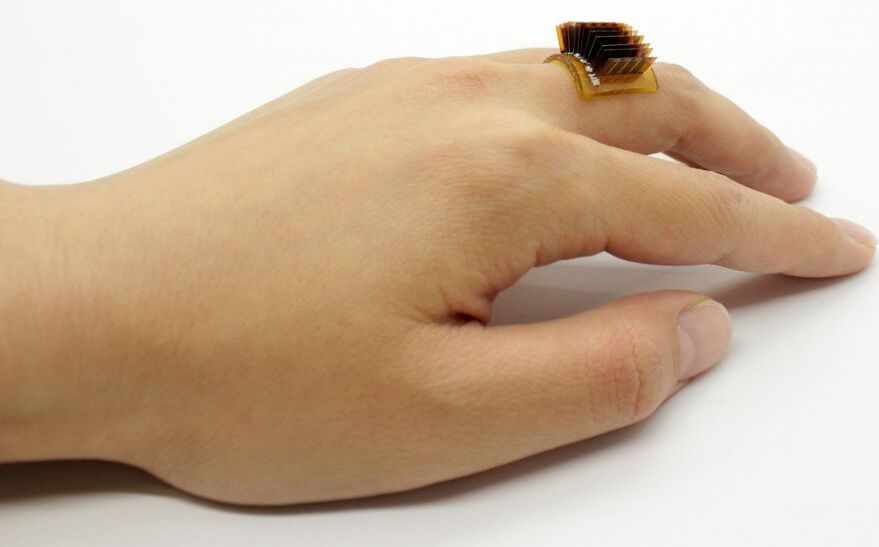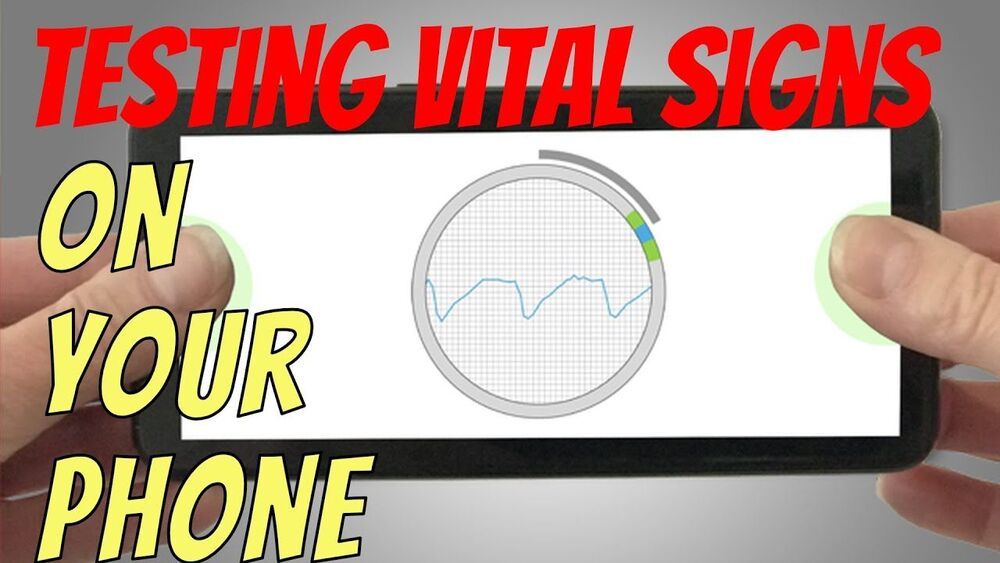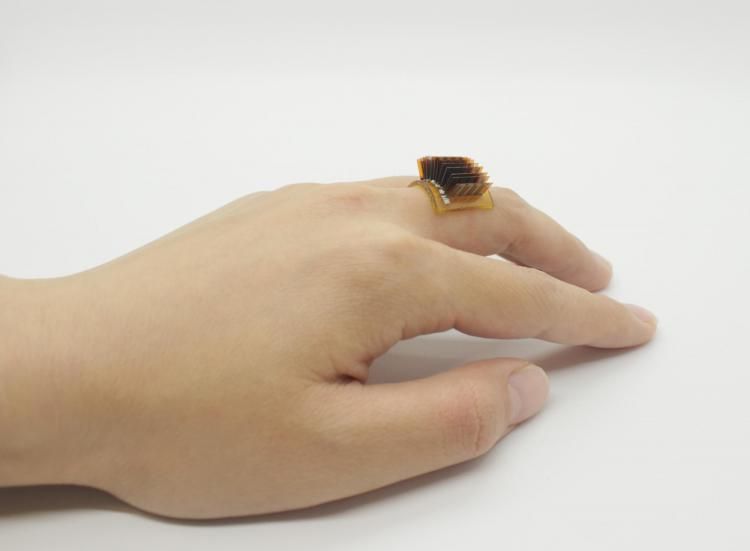Archive for the ‘wearables’ category: Page 40
Feb 27, 2021
Wearable, All-in-One Health Monitor: New Skin Patch Continuously Tracks Cardiovascular Signals and Biochemical Levels
Posted by Genevieve Klien in categories: biotech/medical, chemistry, engineering, health, wearables
Engineers at the University of California San Diego have developed a soft, stretchy skin patch that can be worn on the neck to continuously track blood pressure and heart rate while measuring the wearer’s levels of glucose as well as lactate, alcohol, or caffeine. It is the first wearable device that monitors cardiovascular signals and multiple biochemical levels in the human body at the same time.
“This type of wearable would be very helpful for people with underlying medical conditions to monitor their own health on a regular basis,” said Lu Yin, a nanoengineering Ph.D. student at UC San Diego and co-first author of the study published on February 152021, in Nature Biomedical Engineering. “It would also serve as a great tool for remote patient monitoring, especially during the COVID-19 pandemic when people are minimizing in-person visits to the clinic.”
Such a device could benefit individuals managing high blood pressure and diabetes — individuals who are also at high risk of becoming seriously ill with COVID-19. It could also be used to detect the onset of sepsis, which is characterized by a sudden drop in blood pressure accompanied by a rapid rise in lactate level.
Feb 24, 2021
New Wearable Device Turns Your Body Into a Biological Battery
Posted by Paul Battista in categories: biotech/medical, wearables

Researchers at CU Boulder have developed a new, low-cost wearable device that transforms the human body into a biological battery. The device, described in the journal Science Advances, is stretchy enough that you can wear it like a ring, a bracelet or any other accessory that touches your skin.
Feb 24, 2021
Medical Diagnosis Software With Just A Smart Phone — The Future Is Arriving
Posted by Mark Parkins in categories: biotech/medical, health, mobile phones, privacy, robotics/AI, wearables

Monitoring your vital signs is becoming easier and easier these days, critical if you want to keep track of your general health and well being, and incredibly useful if you want to see how a life style, or dietary, change is playing out. In this video I look at two new companies that are utilising mobile phones to measure a whole raft of biometric data, simply and easily, and clinically tested to deliver medical-grade accuracy. And these are just first generation versions, who knows where this will take us, and what we will be able to monitor quickly and easily in the next few years.
Medical Diagnosis Software With Just A Smart PhoneIn the near future, your phone or a wearable of some description, will constantly be able to monitor all your health signs continuously ready to alert you to any worrying signs, and what they can do today is just the beginning of where we are heading.
Continue reading “Medical Diagnosis Software With Just A Smart Phone — The Future Is Arriving” »
Feb 15, 2021
New skin patch brings us closer to wearable, all-in-one health monitor
Posted by Saúl Morales Rodriguéz in categories: biotech/medical, chemistry, health, wearables
Engineers at the University of California San Diego have developed a soft, stretchy skin patch that can be worn on the neck to continuously track blood pressure and heart rate while measuring the wearer’s levels of glucose as well as lactate, alcohol or caffeine. It is the first wearable device that monitors cardiovascular signals and multiple biochemical levels in the human body at the same time.
Feb 15, 2021
New skin patch promises comprehensive health monitoring
Posted by Brent Ellman in categories: biotech/medical, engineering, health, nanotechnology, wearables
“” This type of wearable would be very helpful for people with underlying medical conditions to monitor their own health on a regular basis,” co-first author of the study Lu Yin said in a news release.
New wearable device converts body heat into electricity.
“It would also serve as a great tool for remote patient monitoring, especially during the COVID-19 pandemic when people are minimizing in-person visits to the clinic,” Yin, a nano-engineering doctoral student at the University of California, San Diego.
In addition to monitoring chronic conditions like diabetes and high blood pressure, as well as pinpointing the onset of sepsis, the patch could help predict people at risk of becoming severely ill with COVID-19.
Continue reading “New skin patch promises comprehensive health monitoring” »
Feb 14, 2021
New wearable device turns the body into a battery
Posted by Saúl Morales Rodriguéz in categories: energy, wearables

A team of engineers has developed a new device that you can wear like a ring or bracelet and that harvests energy from your own body heat.

Ultralight Wearable Air Purifier that Cleans Itself Ultralight Wearable Air Purifier that Cleans Itself Ultralight Wearable Air Purifier that Cleans Itself Ultralight Wearable Air Purifier that Cleans Itself Constant Pressure TechnologyThe first powered mask that keeps constant-pressure with a pair…

Feb 8, 2021
Interim Retinal Projection With Metalenses
Posted by Jeremy Dylan Batterson in categories: augmented reality, biotech/medical, mobile phones, wearables
We can immediately supersede the Mojo Vision approach for retinal projection, with an interim projection system using metalenses. The Mojo Lens approach is to try to put everything, including the television screen, projection method and energy source onto one contact lens. With recent breakthroughs in scaling up the size of metalenses, an approach utilizing a combination of a contact metalens and a small pair of glasses can be utilized. This is emphatically not the Google Glass approach, which did not use modern metalenses. The system would work as follows:
1)Thin TV cameras are mounted on both sides of a pair of wearable glasses.
2)The images from these cameras are projected via projection metalenses in a narrow beam to the center of the pupils.
Continue reading “Interim Retinal Projection With Metalenses” »
Feb 2, 2021
A new bio-inspired joint model to design robotic exoskeletons
Posted by Genevieve Klien in categories: cyborgs, robotics/AI, wearables
Recent advances in the field of robotics have enabled the fabrication of increasingly sophisticated robotic limbs and exoskeletons. Robotic exoskeletons are essentially wearable ‘shells’ made of different robotic parts. Exoskeletons can improve the strength, capabilities and stability of users, helping them to tackle heavy physical tasks with less effort or aiding their rehabilitation after accidents.













